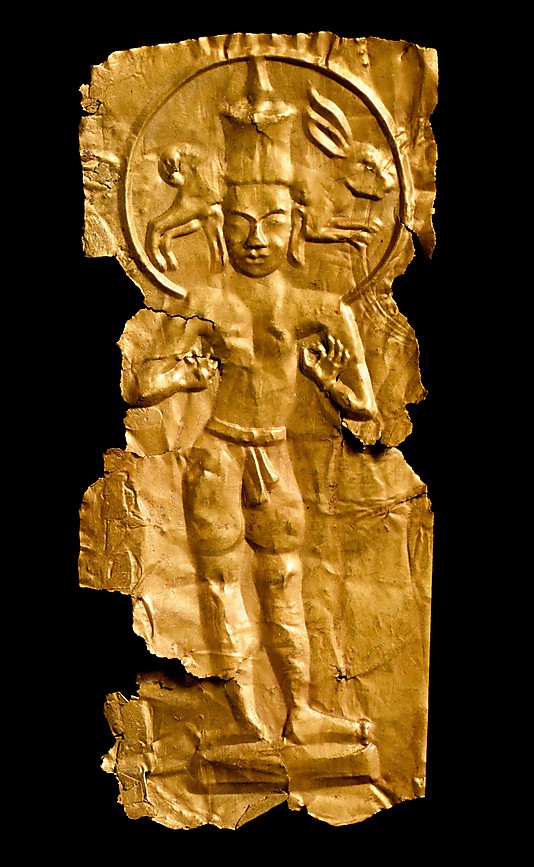Candraprabha, Personification of the Moon, late 7th–8th C. Central Thailand. © The Metropolitan Museum of Art.
- Date:
- late 7th–8th century
- Culture:
- Central Thailand
- Medium:
- Repoussé gold
- Dimensions:
- H. 3 15/16 in. (10 cm); W. 1 3/4 in. (4.5 cm)
- Classification:
- Sculpture
- Credit Line:
- Lent by Victoria and Albert Museum, London (IS.27-1987)
More from the source:
The practice of personifying planets has Vedic origins in ancient India and was undoubtedly part of the veneration of the elements in Southeast Asian antiquity as well. Candraprabha, “he who has the moon [candra] in his nimbus,” is best understood from the Indian sources as a planetary deity, although he does seem, as depicted in this repoussé plaque, to have assumed bodhisattva-like qualities and may have been intended to function as a divine saviour in Mon culture. In the context of a number of Buddhist Jataka tales, the hare depicted in the nimbus alludes to selfless acts of giving (dana), leading ultimately to the Buddhist virtue of danaparamita, the perfection of giving.
cat. 149
Provenance: Probably found in Si Thep, Phetchabun province; acquired from a London dealer, Spink & Son, in 1987.




